Perhaps you remember the scene in The Best Exotic Marigold Hotel (2011)* when Evelyn (Judi Dench) swigs a gin and tonic thinking that it’s a glass of water. Well, that was filmed on the rooftop terrace of the Jagat Niwas Palace in Udaipur. I know that the Jagat Niwas is a magical hotel with or without alcohol. As a matter of fact, I myself was feeling no pain (although I was just drinking bottled water) when I sat in the same place several months ago. As I watched the sun drop over Lake Pichola in vibrant shades of rose, I wished that time could stop.
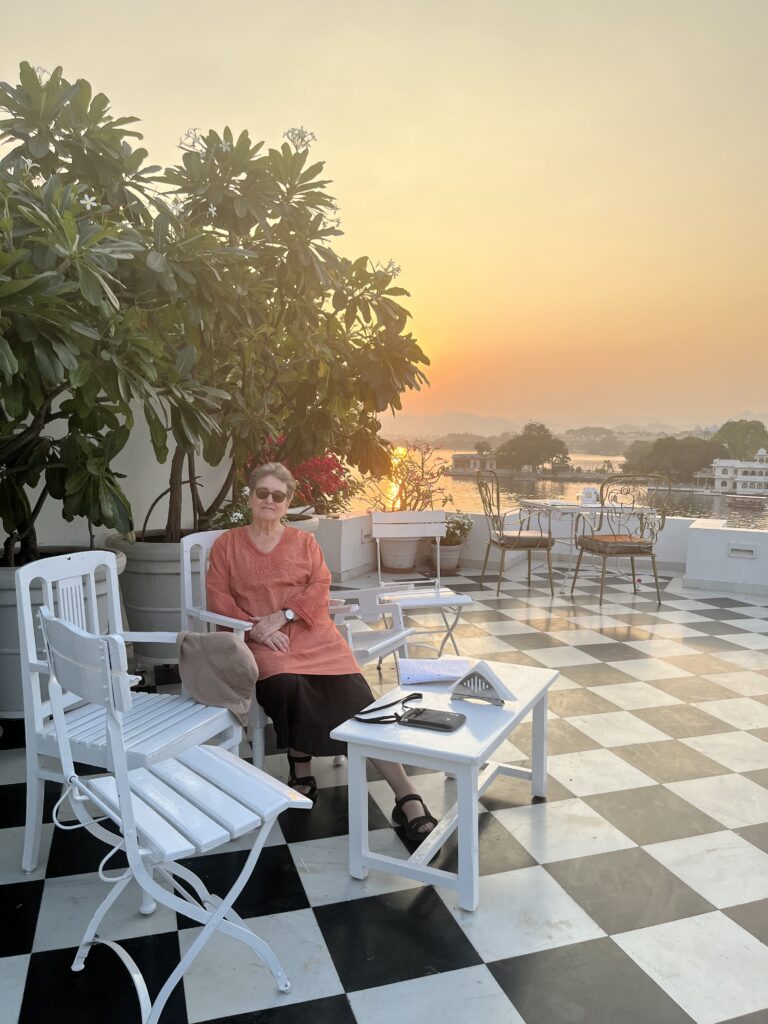
Travel + Leisure Readers Vote Udaipur “Top City in Asia”
Although I have been to India many times, I had never been to Udaipur or, for that matter, anywhere in the Indian state of Rajasthan. This past November I traveled there with a small group of women aged 60 and over (I will be 75 in a few months and was the oldest in the group). One person brought her lovely 33-year-old daughter, who fit our group perfectly. We were led by Ann Marie McCarthy, who runs Cracking India tours. Her philosophy of India travel is that it is “transformational, if you are willing to be open to the experiences.” And many of us, all inveterate travelers, were.
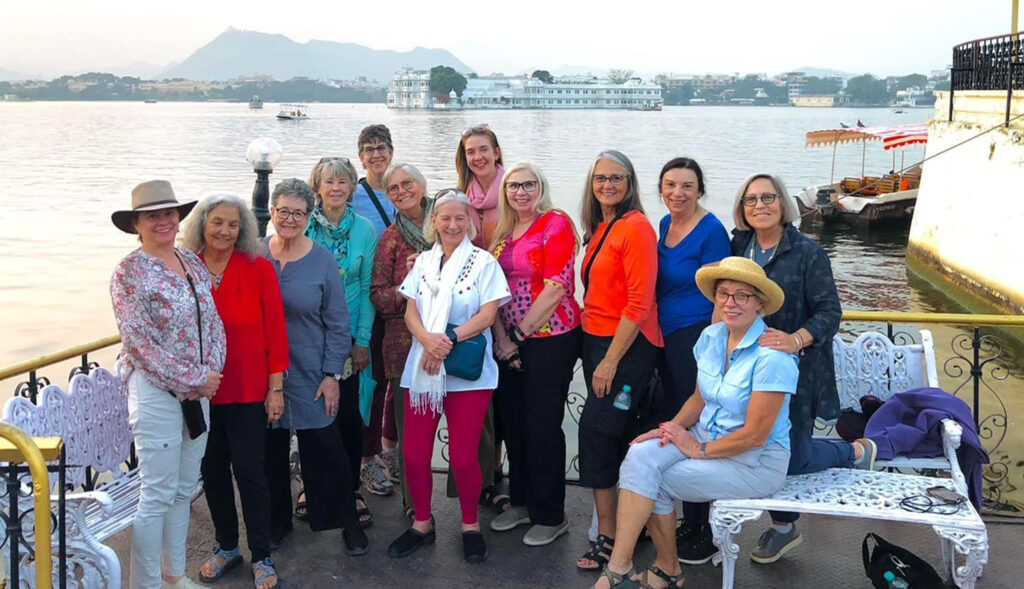
Ann Marie personally chose the Jagat Niwas Palace for our stay. In fact, she personally chose all the amazing palaces and havelis we visited. Havelis are intricately decorated Marwari merchant’s houses built from the 15th century on; many are now hotels and inns. Ann Marie has spent years visiting and searching for places that illuminate India’s rich history and culture.
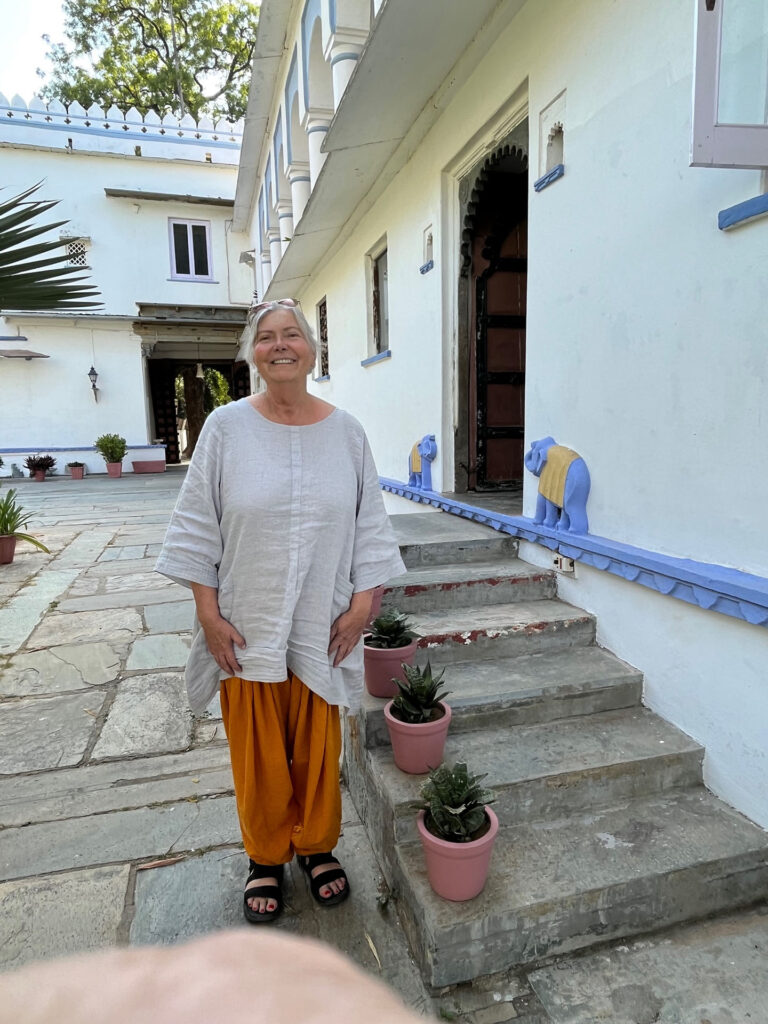
Every time we checked in to a new place we were amazed. We agreed that the sculpture, architecture, photographs, textiles, and paintings were breathtaking (although some of us were more than a little flummoxed by the taxidermized wildlife on the walls).
Although it is far from the only Asian city that has claimed the title “The Venice of the East,” Udaipur certainly has a valid claim. There are seven lakes (admittedly artificial ones so as to provide drinking water and irrigation, but nonetheless gorgeous). The most famous and oldest is Lake Pichola, created in 1362.
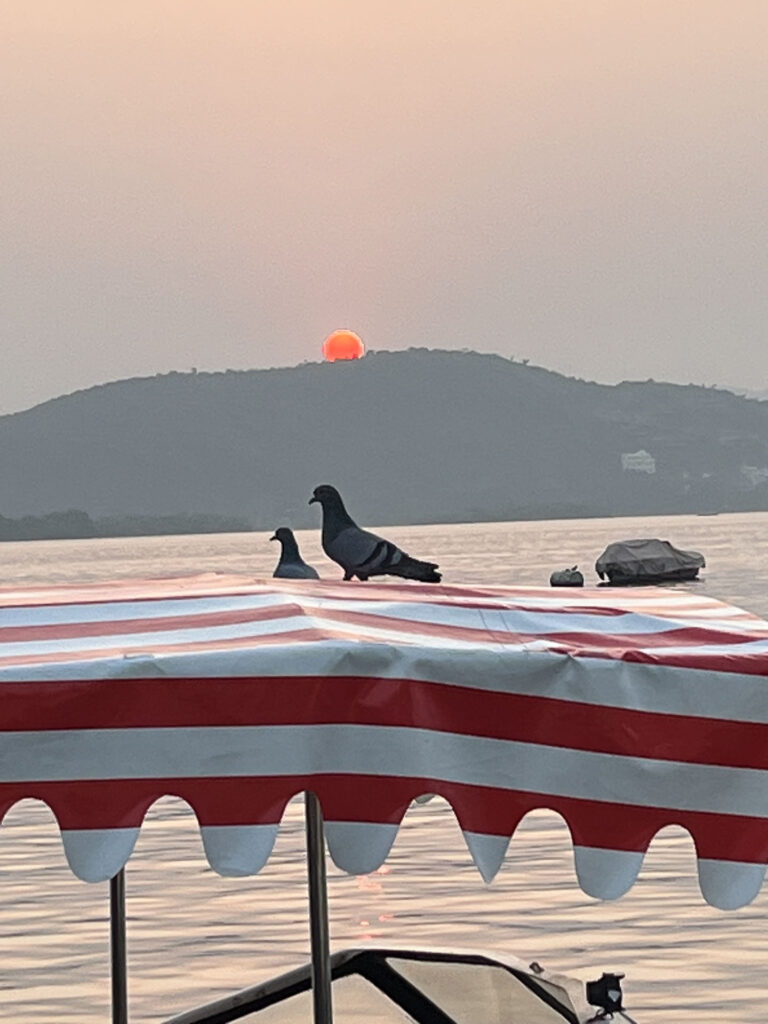
City of Lakes
What Udaipur has in common with Venice is that both their waterways and the palaces and historic homes lining their banks look as if they were lifted from a magical fairy tale.
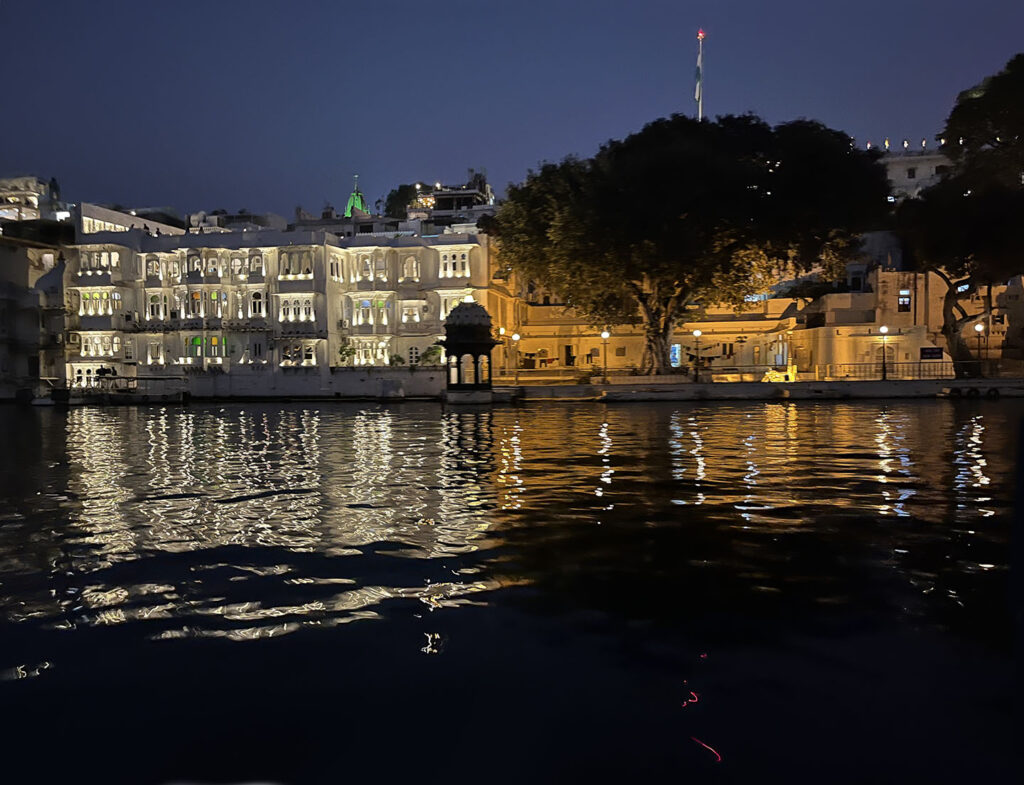
Lake Pichola
Lake Pichola is a romantic vision of colors and lights from every angle, which is why it is a prime site for weddings and honeymoons.
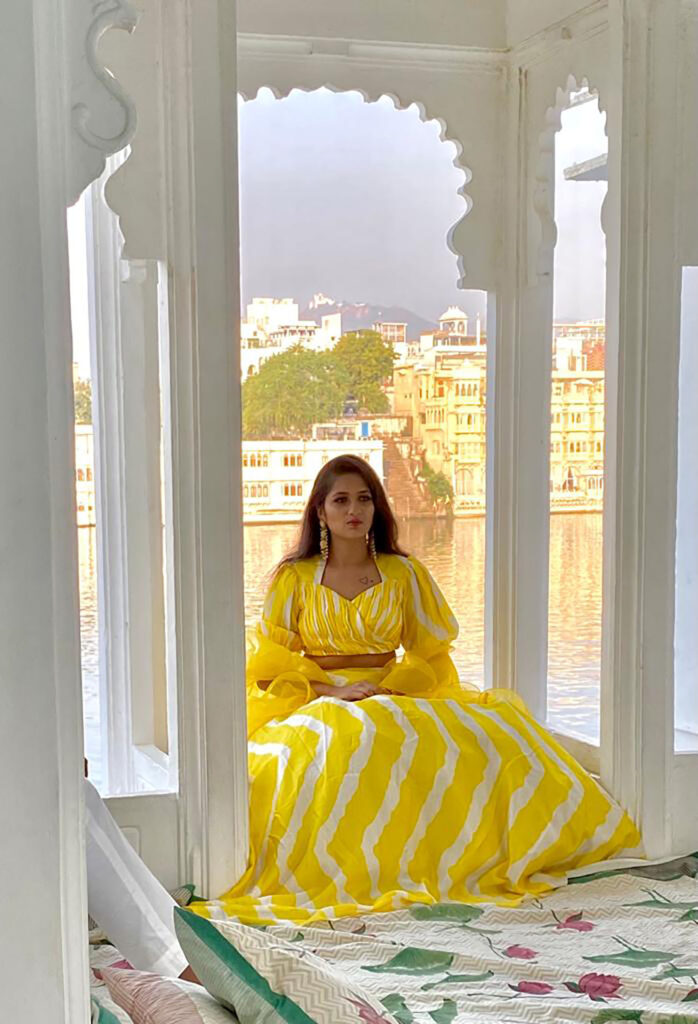
The waters seem tranquil these days: we witnessed that from our small boat moving slowly across the lake.
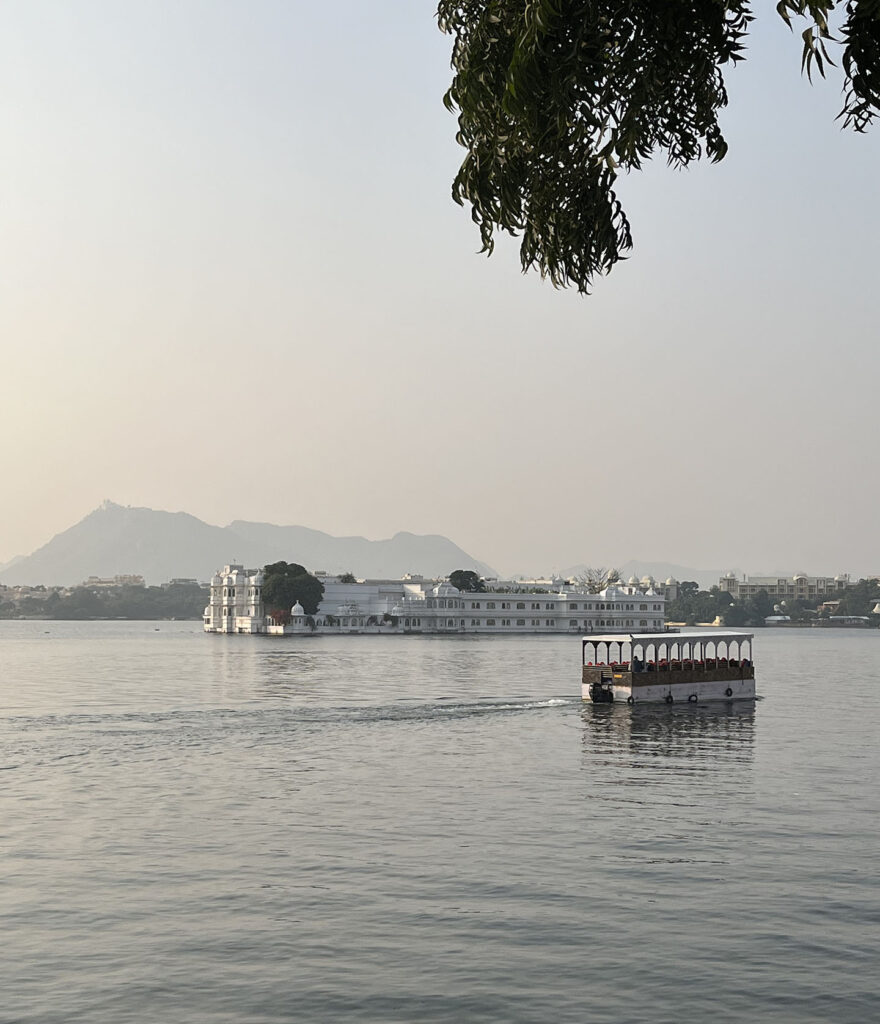
But Udaipur was not always so peaceful. From the 16th century on the city was a Rajput stronghold, with the maharanas defending their lands against the Turk, Afghan, and Mongol invaders.
The Mughal empire was another story. They ruled India from 1526 until 1761. However, there is still debate about who won the Battle of Haldighati in 1576. That year Rajput troops led by the Mewar leader Maharana Pratap fought the Mughal troops of Akbar. Indians still regard Pratap as a hero and as the country’s first freedom fighter. In fact, just 5 km from City Palace in Udaipur on Pearl Hill is a statue of Maharana Pratap and his loyal horse Chetak.
Two Fabulous Islands in Lake Pichola
Jag Niwas (site of the Taj Lake Palace)
One of the most romantic hotels in India, the Taj Lake Palace, is now run by the Taj group. Shimmering in the lake like a mirage, the five-star hotel is the almost 280-year-old former winter residence of the royals of the Mewar dynasty.
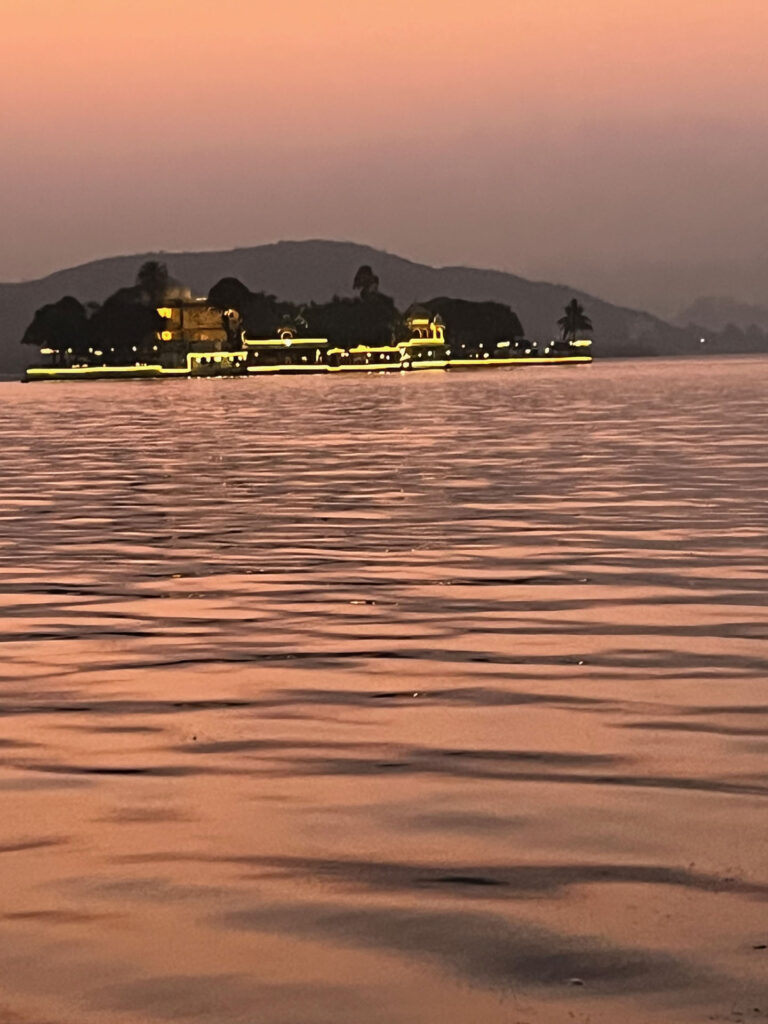
The hotel was a memorable featured location in the James Bond film, Octopussy (1983). Famous folks from Vivien Leigh to Queen Elizabeth to the Shah of Iran to Jacqueline Kennedy have stayed there. The hotel was restored in the 1960s and again in 2000.
Jag Mandir (site of the Jagmandir Island Palace)
Near the Taj Lake Palace is the Jag Mandir Palace, with the hotel known as the Jagmandir Island Palace. It was also used for exterior shots of Octopussy’s home. The palace was built upon another artificial island on Lake Pichola.
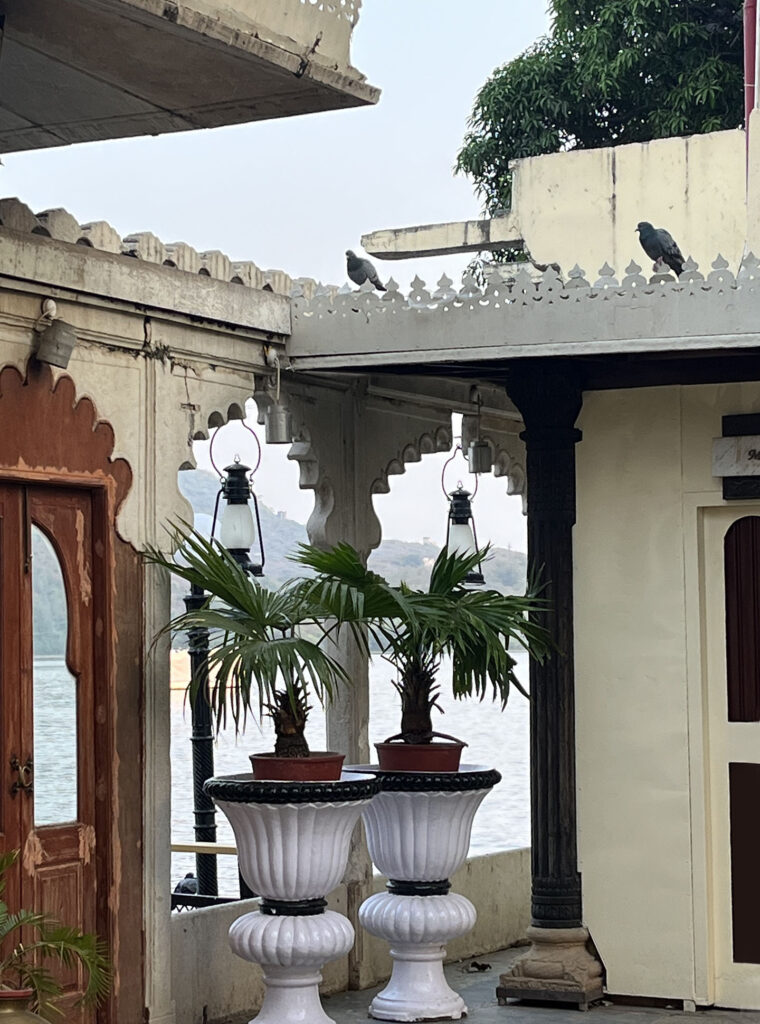
Construction of the Jag Mandir began in the 16th century. The island was said to be a hideout for Prince Khurram (later Emperor Shah Jahan) when he fought against his father, Jahangir, in the 17th century. It is said that several of the buildings inspired his Taj Mahal in Agra.
We visited the Jag Mandir after a short boat ride from the banks of Lake Pichola. Visitors traveling by boat from the ghat or jetty in Udaipur can wander the hotel and environs or eat at its restaurants or gaze at the giant marble elephant sculptures guarding the palace.
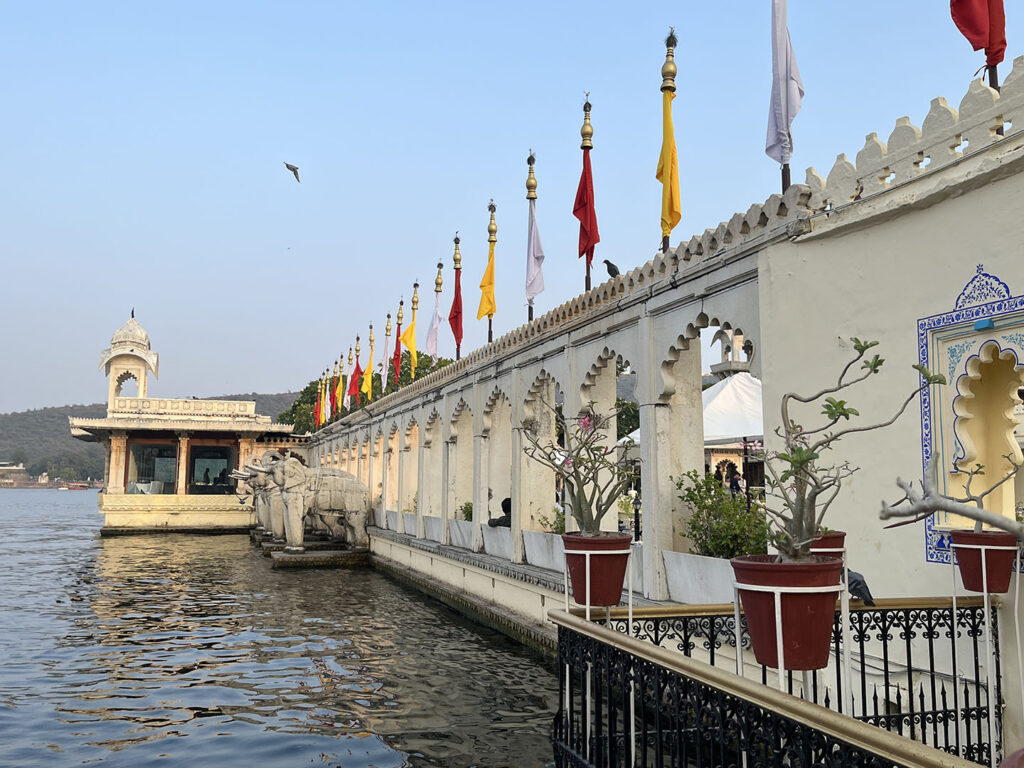
City Palace
Built on top of a hill to the east of Lake Pichola and with grand views of the lake and beyond, the City Palace was originally the home of the Mewar rulers. Construction began in 1559 and continued over four and a half centuries. The complex was opened to the public in 1969.
The palaces built within the complex house exhibits of artwork. There are more than 1,800 paintings of life in the palace, including hunting, elephant fights, festivals, and battles. There are garments of the royal family on display, along with a silver collection that ranges from religious ritual objects to the jewels of the men and ladies of the court (and even silver decorations worn by elephants and horses). The photographic collection is especially extensive, with more than 28,000 pictures of what life was lake from the mid-19th century to the early 20th century.
Jagdish Temple
Near the City Palace, stone elephants also guard the gates at the Jagdish temple, built by Jagat Singh in 1651. The largest and most famous temple in Udaipur, Jagdish is dedicated to Lord Vishnu.
More to See, Hear, and Experience in Udaipur
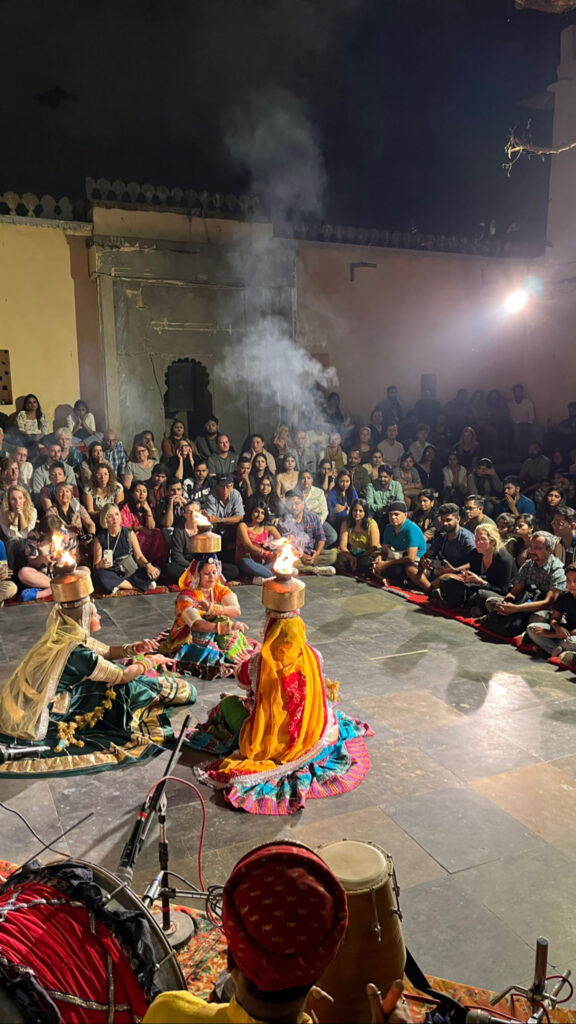
Other popular places to visit are the Rajasthani dance and puppet performances, the Gulab Bagh Zoo, the forts of Kumbhalgarh and Chittorgarh, and a vintage and classic car collection. Tourists often visit the Shilpgram rural arts and crafts complex and the Udaipur solar observatory. There’s even a cable car with amazing lake views, called the Mansapurna Karni Mata Ropeway.
But the place that I enjoyed visiting the most was a journey away in time and space. It is about 100 kilometers from Udaipur, and it’s not the easiest journey. But when you reach the town of Dungarpur near the Aravalli hills of southern Rajasthan, you’ll find the amazing Juna Mahal.
Juna Mahal: Not Near But Not Too Far
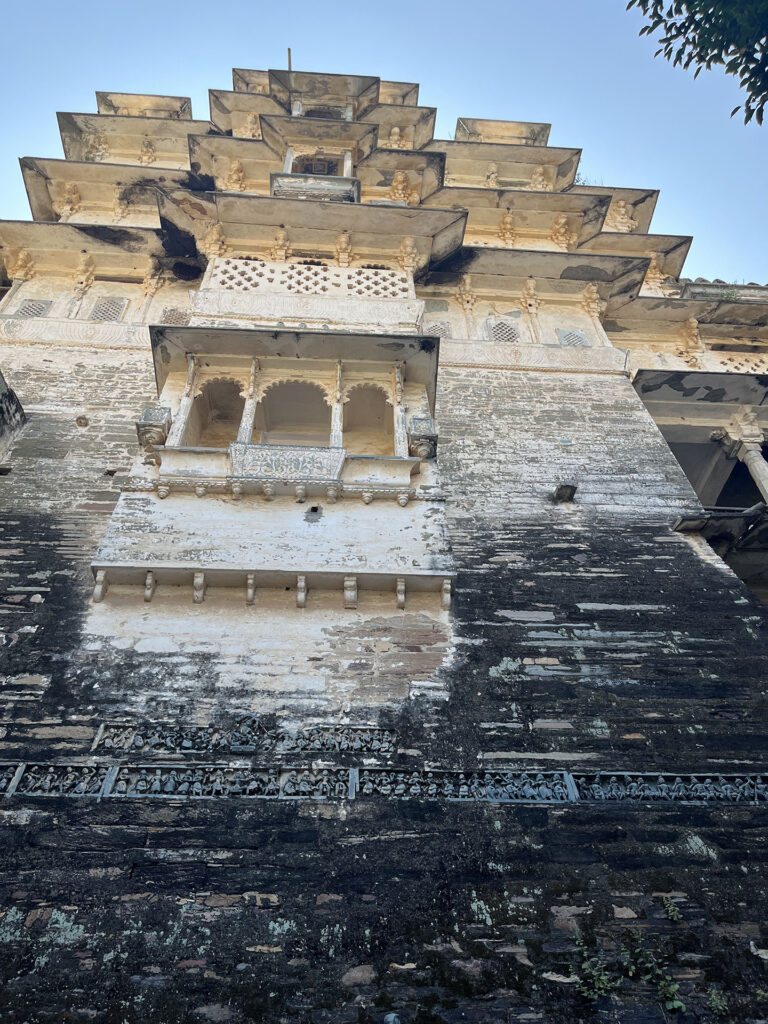
The seven-story complex reminded me of Black Narcissus, the 1947 Michael Powell-Emeric Pressburger film starring Deborah Kerr, about nuns living in an old and abandoned palace in the Himalayas, far from the Thar desert of Rajasthan.
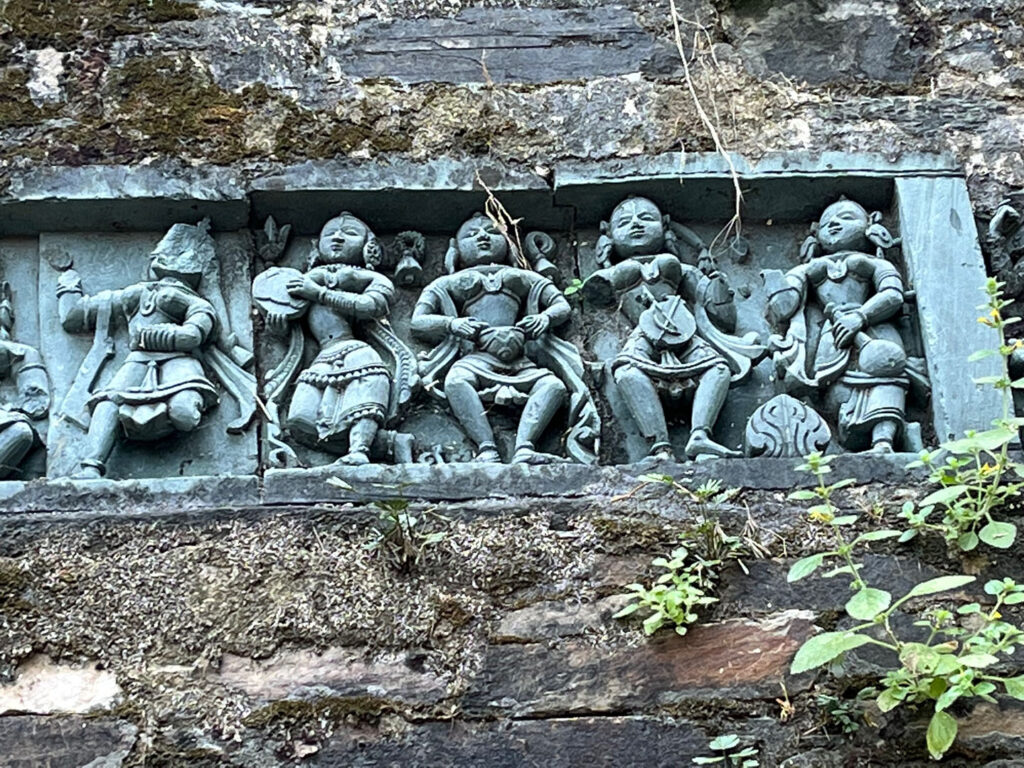
As I wandered the faded rooms and courtyards of the Juna Mahal, I had the feeling that they were still populated with the spirits of those rulers and their coteries, surrounded by glorious art, music, and culture. Seeing the beauty of the interior in relative solitude made it even more powerful; very few tourists visit the complex. On the top floor (and the steps are steep) is a collection of miniature paintings with scenes from the Kama Sutra, locked in a closet in the Maharaja’s suite.
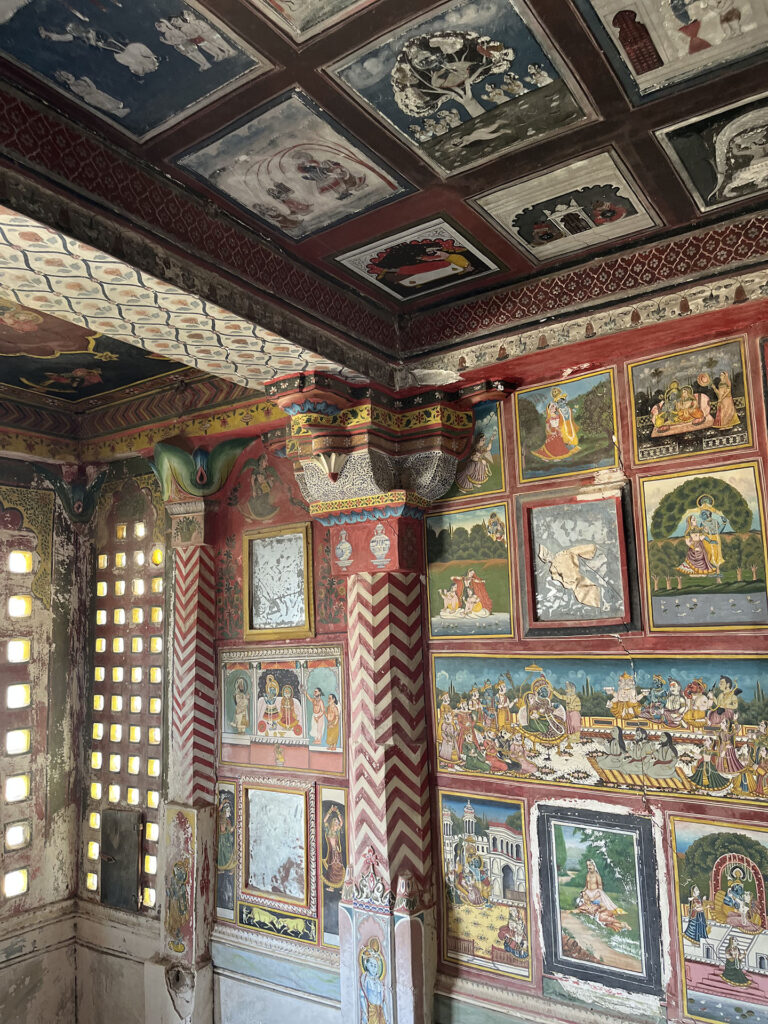
While many of the palaces, havelis, and temples we visited showed signs of their age, the Juna Mahal feels as caught in time as a fossil in amber. It seems incredible that the first palace was built in the 13th century, with rooms and art added through the 19th century. The interior is less chaotic than a visitor might expect; it demonstrates how buildings such as these have evolved through the centuries in terms of design, architecture, and construction materials.
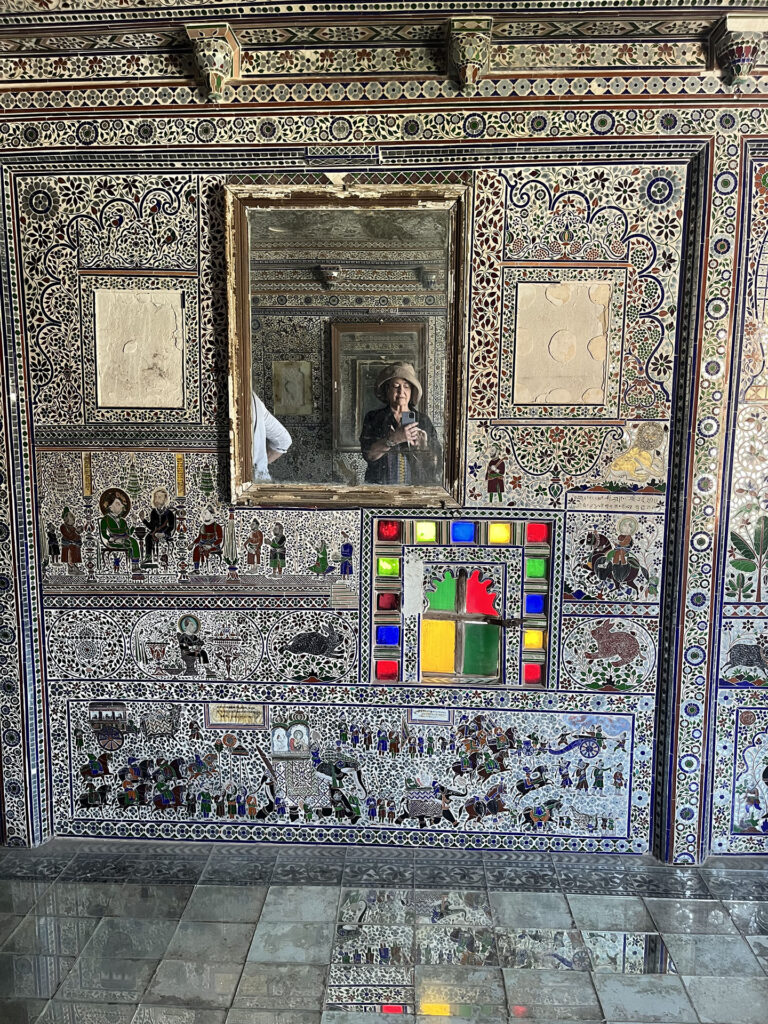
The Juna Mahal fell into disrepair in the mid-20th century. Much of the art within has been defaced or destroyed. In 2014 the World Monuments Watch brought the importance of the building to the attention of the public and has since contributed to its conservation and repair. There is still much work to do.
And the Juna Mahal rulers from hundreds of years ago seem to be watching from the peeling walls to see if the work is being done.
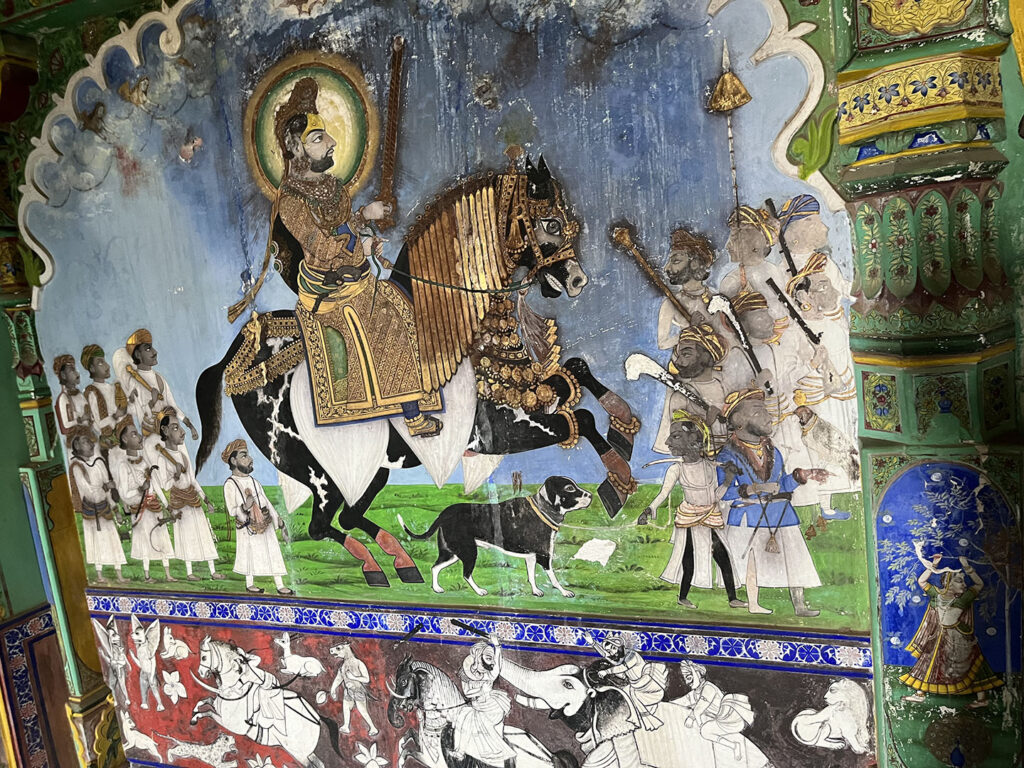
*NB The Best Exotic Marigold Hotel
The Best Exotic Marigold Hotel was filmed mostly in Rajasthan; however, the real exotic hotel is the Ravla Khempur, built originally in the 1620s and located about an hour and a half outside of Udaipur in the village of Khempur. Other scenes—including the crowded bazaar, flower market, and the regal Viceroy Club (was Castle Kanota, now the heritage Hotel Narain Niwas Palace)–were shot in Jaipur.
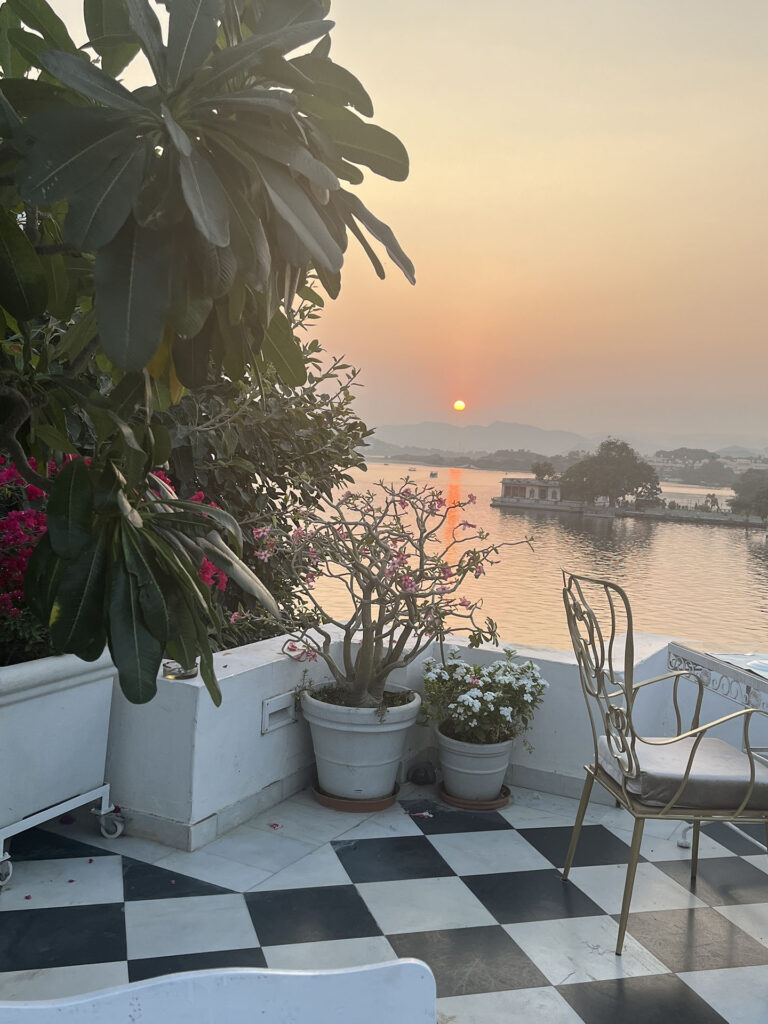

Nice article, Barbara.
Thanks, Ron….hope that you are well. Haven’t been up to Danbury for a long time. Moved to New Castle, Delaware almost two years ago. It’s boring but pretty. Take care….